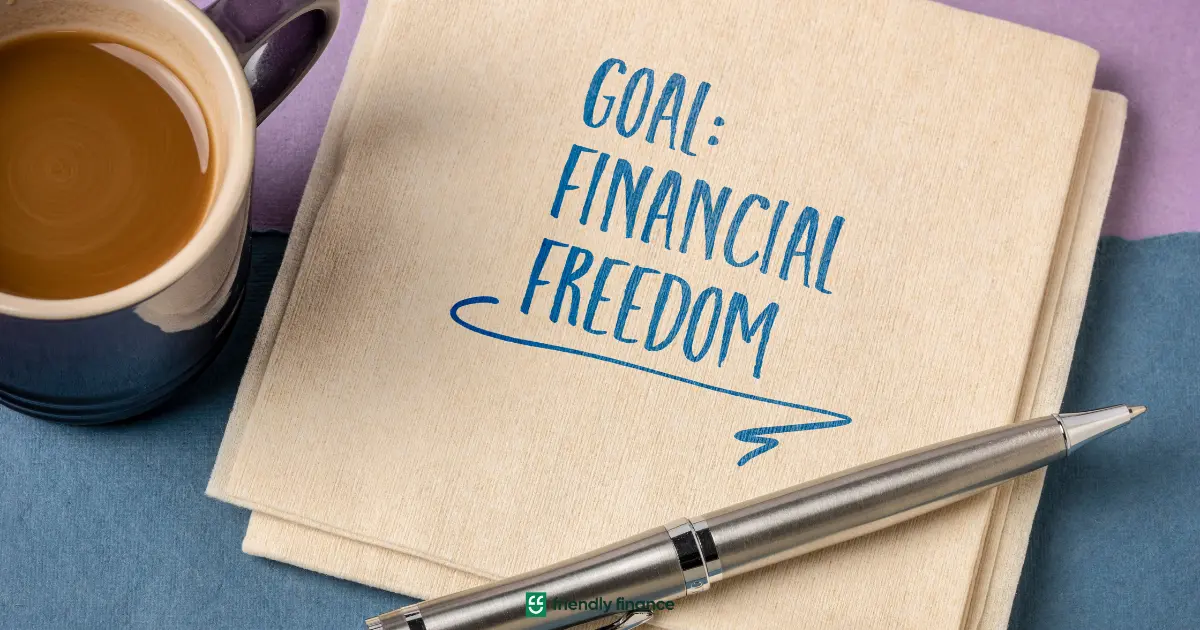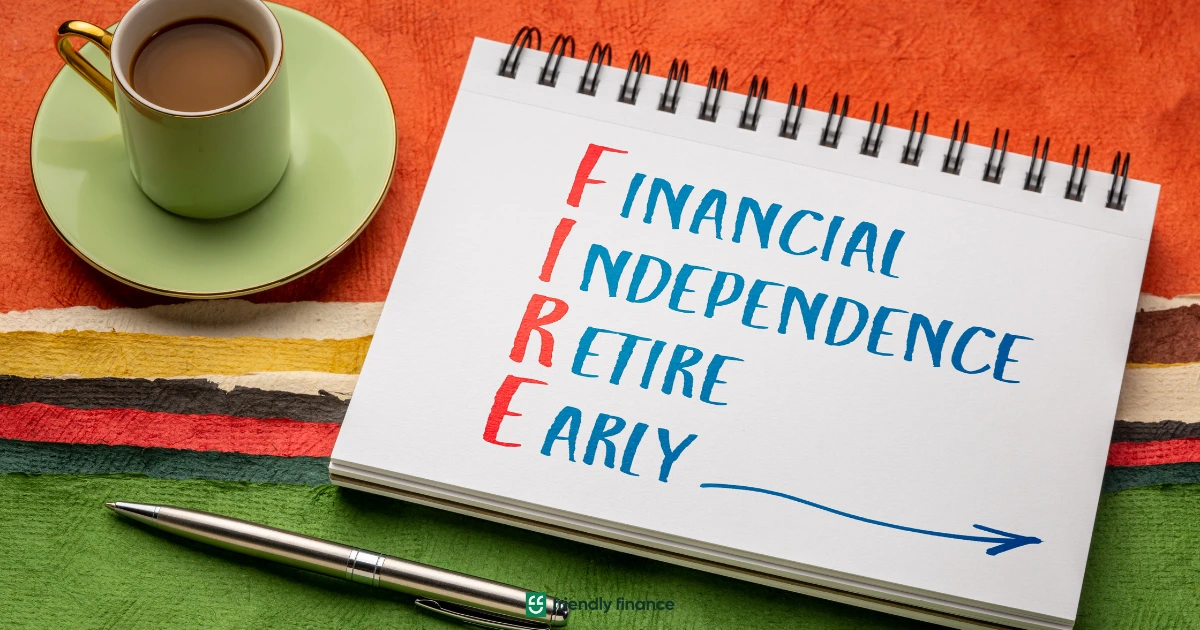Your Guide to Financial Freedom: Smart Habits, Budgeting Tips, and Income Strategies That Work
Key Takeaways
Build strong financial habits: Track spending, budget using the 60/40 method, and prioritise debt repayment to stay financially on track.
Invest and diversify: Grow your wealth with long-term investments while maintaining an emergency fund for unexpected expenses.
Create multiple income streams: Explore side hustles, pay in cash when possible, and align spending with your financial goals.
Achieving financial freedom means having the resources to live the life you want without being constrained by financial limitations. This involves developing good financial habits, such as budgeting, saving, investing, and managing debt. It also requires a long-term perspective and a willingness to make sacrifices in the short term for the sake of long-term financial security.
In this article, we’ll explore some steps you can take to achieve financial freedom.
What is Financial Freedom?
Financial freedom, also known as financial independence, is the state of being able to meet your financial needs and goals without being dependent on a paycheck or others. It means having enough savings, investments, and passive income streams to cover your expenses and maintain your lifestyle without having to work for a living.
Financial freedom can give you the ability to make choices and pursue your passions without being limited by financial constraints. It can also provide peace of mind and security for the future, allowing you to retire early if you choose to do so.
Healthy Financial Habits to Practice
Always evaluate your current financial status
This means taking a comprehensive look at your income, expenses, savings, debt, and investments.
You should analyse your spending patterns and identify areas where you can cut back and save money. Reviewing your debts and creating a plan to pay them off can help you reduce interest payments and become debt-free. Regularly monitoring your investment portfolio can also help you make informed decisions and adjust your strategy as needed.
By evaluating your financial status regularly, you can track your progress towards financial freedom and make adjustments as needed to stay on track.
Write down all your financial goals
Setting specific and measurable goals for your finances and recording them in a visible place, such as a notebook or on your computer can help you stay on track with your financial goals.
Your goals should be realistic and aligned with your values and priorities. Some examples of financial goals may include saving for a down payment on a home, paying off credit card debt, building an emergency fund, or investing for retirement.
By writing down your financial goals, you are creating a roadmap for your financial journey and can track your progress towards achieving them. This can help you stay motivated and focused on the big picture, even when faced with short-term setbacks or challenges.
Additionally, it can help you make informed decisions about your spending and saving habits, as you can see how each decision aligns with your financial goals.
Track down all your expenses
Keeping a record of all your expenses, including small purchases like coffee or snacks can help you better track where you are spending your money on. You can do this using a budgeting app, spreadsheet, or pen and paper.
Tracking your expenses can help you identify areas where you may be overspending or where you can cut back to save money. Regularly tracking your expenses can also help you create a realistic budget and stay accountable to your financial plan. You can review your expenses and adjust your budget as needed to ensure you’re on track to achieve your financial goals.
By being mindful of your spending habits, you can make conscious decisions about your money and prioritise your financial goals.
Practice the 60/40 budget method
Practising the 60/40 budget method is a habit that can help you achieve financial freedom. This method involves allocating 60% of your income towards your fixed expenses and financial goals, and 40% towards your flexible expenses.
Fixed expenses include items like rent or mortgage payments, utilities, health insurance, and debt payments. Flexible expenses include items like groceries, entertainment, and another discretionary spending.
To implement this method, start by determining your total monthly income. Then, allocate 60% towards your fixed expenses and financial goals, and 40% towards your flexible expenses. Monitor your spending throughout the month and adjust as needed to stay within your monthly budget.
By following the 60/40 budget method, you can prioritise your financial goals and ensure you’re making progress towards achieving them. It can also help you control your spending and avoid overspending on non-essential items.
Pay off all your debts
Paying off all your debts is a critical habit to practice if you want to achieve financial freedom. This means creating a plan to pay off any outstanding debts, such as credit card balances, personal loans, or student loan debt.
Paying off your debts can provide several benefits, such as reducing your interest payments and improving your credit score. Additionally, it can free up more money for you to allocate towards savings or investments, which can help you achieve financial freedom more quickly.
To pay off your debts, start by creating a list of all your debts and the corresponding interest rates. Determine which debt has the highest interest rate and focus on paying that one off first while making minimum payments on your other debts. Once that debt is paid off, move on to the next one with the highest interest rate and repeat the process.
You can also consider consolidating your debts with a balance transfer credit card or personal loan, which can provide a lower interest rate and simplify your debt repayment plan.
Overall, paying off your debts is an essential habit to practice if you want to achieve financial freedom, as it can help you reduce your financial obligations and free up more money for savings and investments.
Investing
Investing is a crucial component of achieving financial freedom, as it can help you grow your wealth over time and generate passive income streams.
Investing involves putting your money into various assets, such as stocks, bonds, real estate, or mutual funds, with the expectation of earning a return on your investment over time. The goal of investing is to earn a higher return than you would by simply keeping your money in a savings account or other low-risk investments.
When investing, it’s also important to have a diversified portfolio, which means spreading your investments across different asset classes and sectors to minimise risk in case one of your investments experiences a dip. As part of diversifying, consider investing in popular gold coins that are widely recognised and liquid—such as the American Gold Eagle, Krugerrand, and Maple Leaf—to balance risk with tangible assets.
There are several different types of investments, each with its risks and potential returns. It’s important to do your research or consult an expert before making any investment decisions.
If possible, always pay in cash
Paying in cash can help you control your spending and avoid overspending on non-essential items. When you pay in cash, you’re forced to physically hand over the money, which can make you more mindful of your spending habits.
Using cash also helps you avoid accumulating debt, as you’re only spending the money you have on hand. This can help you avoid high-interest rates and fees associated with credit card debt.
However, paying in cash may not always be practical or convenient, especially for large purchases or online transactions. In these cases, you can consider using a debit card or credit card, but it’s important to ensure you’re only charging what you can afford to pay off in full each month to avoid accumulating debt.
Have an emergency fund
Having an emergency fund can provide a safety net for unexpected expenses or financial emergencies. An emergency fund is a separate savings account that you set aside specifically for unexpected expenses or emergencies. This can include things like unexpected medical bills, car repairs, or job loss.
Experts recommend having three to six months’ worth of living expenses saved in your emergency fund, but the amount can vary depending on your circumstances.
To build an emergency fund, start by setting a savings goal and creating a budget to allocate a portion of your income towards savings. You can automate your savings by setting up a direct deposit from your paycheck into your emergency fund account.
It’s important to keep your emergency fund separate from your other savings accounts and avoid dipping into it for non-emergency expenses. If you do need to use your emergency fund, make sure to replenish it as soon as possible.
Create additional sources of income
There are several ways to create additional sources of income, including starting a side business, freelancing, or investing in real estate or stocks. You can also consider leveraging your skills or hobbies to generate additional income, such as offering consulting services or selling handmade goods.
When creating additional sources of income, it’s essential to consider the time and resources required and ensure they align with your overall financial goals. You should also consider the tax implications and any associated costs, such as startup costs or ongoing expenses.
Have a budget for your wants, and stick to it
To create a budget for your wants, start by determining your discretionary income, which is the amount of money you have left over after paying for essential expenses like housing, utilities, and food. Then, allocate a portion of your discretionary income towards your wants, such as entertainment, dining out, or shopping.
It’s important to set realistic and achievable goals and to continuously track your spending to ensure you’re staying within your budget.
Bottomline
Achieving financial freedom is not something that can be accomplished overnight. It’s a continuous process of mindful spending and a conscious effort to avoid bad financial habits that can hinder you from gaining financial freedom. Do not be limited by the practices indicated above as there are so much more you can do to achieve your goals. You just have to find the best ones that fits your current status.



